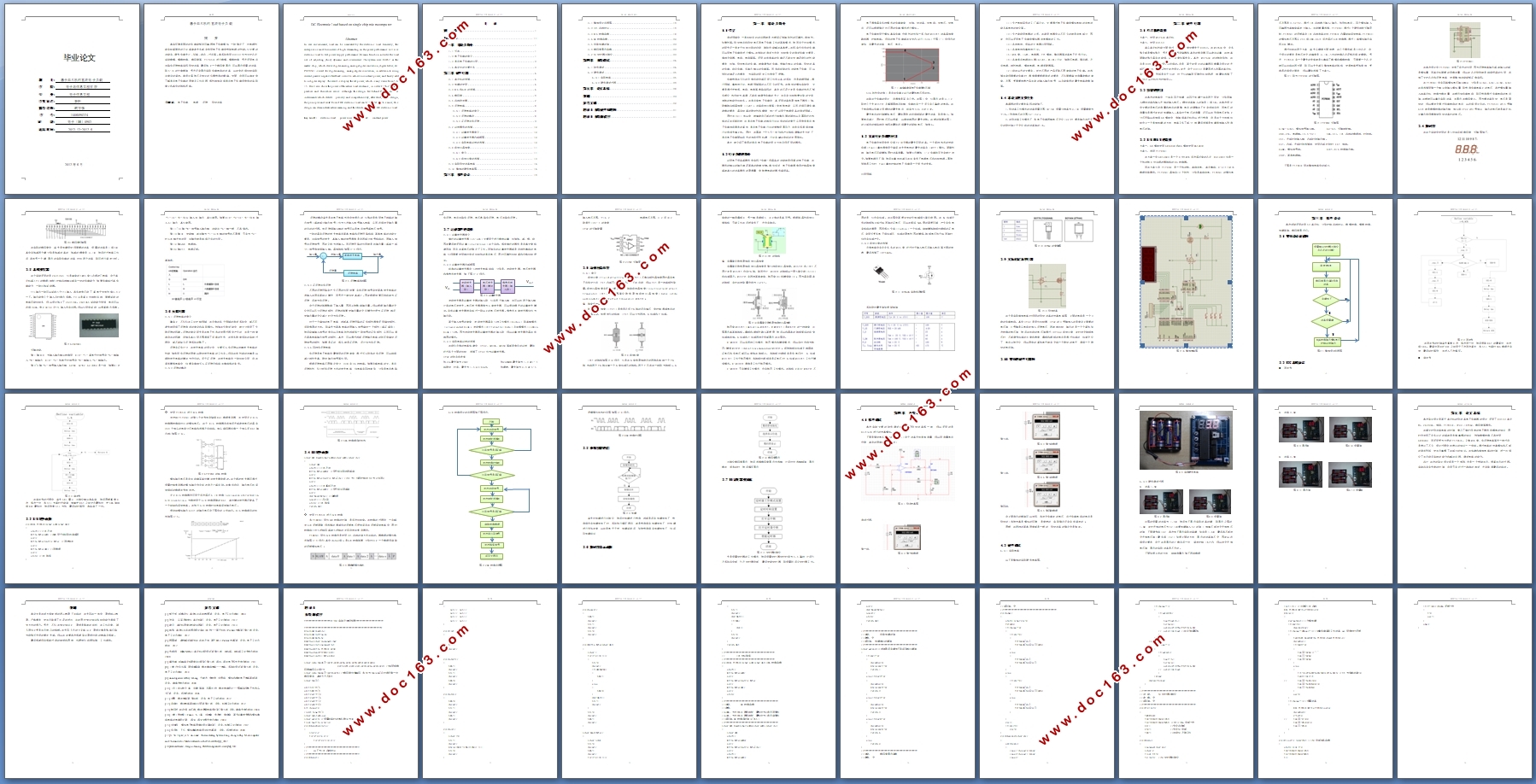基于单片机的直流电子负载设计

1.无需注册登录,支付后按照提示操作即可获取该资料.
2.资料以网页介绍的为准,下载后不会有水印.资料仅供学习参考之用.
密 惠 保
基于单片机的直流电子负载设计(任务书,开题报告,外文翻译,论文10100字)
摘 要
真实环境里面的的负载能够由可编程电子负载模拟,一般情况下,对电源性能有较高需求的企业或商家大多都会利用电子负载来检验电源的性能。它主要的功能有:调节负载大小、短路、动态、过流等。本系统利用89C52作为主控芯片,驱动数模、模数转换、数码管等,PCF8591进行数模、模数转换,另外采用电流并联负反馈电路实现恒定功率,最后加上一个数码管显示,可以显示设置的功率,即5-15的任意数值,另外还会显示实际负载电阻的功率,以此来达到比较实际与理论的误差。本设计虽然不及专业的仪器检测的精确、全面,但是可以借此来了解直流电子负载的原理及工作流程,感性地体会到直流电子负载所带来的实际意义和其中的结构思路。
关键词: 电子负载 电源 反馈 恒定功率
DC Electronic load based on single chip microcomputer
Abstract
In real environment, load can be simulated by the electronic load. Generally, the enterprise or most businesses of high demanding on the power performance will use electronic load to test power supply performance. Its main function includes the load size of adjusting ,short, dynamic and overcurrent. The system uses 89C52 as the master chip, which drives digital-analog, analog-digital conversion, digital tubes, etc. PCF8591 is used for digital-analog, analog-digital conversion, in addition to using current parallel negative feedback circuit to achieve a constant power, and finally add to a digital display. The result is display the set power, which is any value from 5 to 15. It will also show the power of the actual load resistance , in order to achieve more practical and theoretical errors. Although this design fall behind the professional instruments which detects precisely and comprehensively, after studying the design, the principles and work flow of DC electronic load can be realized, what is more, the design can demonstrate actual meaning and the structure ideals of DC electronic load. [资料来源:http://think58.com]
key word : electronic load power source feedback constant power

目 录
摘 要 I
Abstract II
第一章 绪论及简介 1
1.1引言 1
1.2电子负载的简介 1
1.3 直流电子负载的应用 2
1.4 本论文的主要任务 3
第二章 硬件电路 4
2.1 单片机的选择 4
2.2 按键的使用 4
2.3 D/A和A/D的选择 4
2.4 数码管 6
2.5 总线收发器 7
2.6 反馈电路 8
2.6.1 反馈电路的简介 8
2.6.2 反馈的概念 8
2.6.3 正反馈与负反馈 9
2.7 运放器件的选择 10
2.7.1 运算放大器简介 10
2.7.2 运算放大器内部框图 10
2.7.3 实际电路运放的选择 10
2.8 场效应晶体管 11
2.8.1 简介 11
2.8.2 场效应管的选择 13
2.9 实际恒定功率电路 14
2.10 整体的硬件电路图 14
第三章 软件设计 16
3.1 整体设计流程图 16
3.2 I2C总线协议 16
3.3 D/A转换函数 18
3.4 AD转换函数 20
3.5 获取按键的值 22
3.6 数码管显示函数 22
3.7 T0定时器初始化 23
第四章 系统调试 24
4.1 软件调试 24
4.2 硬件调试 25
4.2.1 实际电路 25
4.2.2 硬件调试过程 26
第五章 论文总结 28 [资料来源:www.THINK58.com]
致谢 29
参考文献 30
附录A 系统硬件原理图 31
附录B 系统源程序 31
